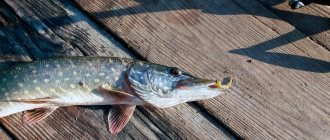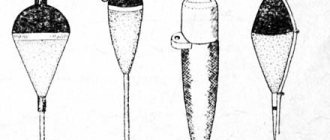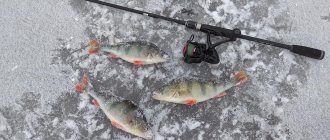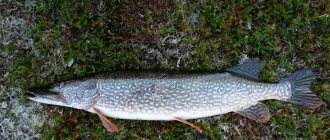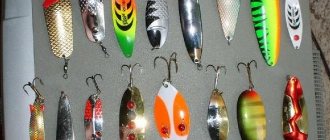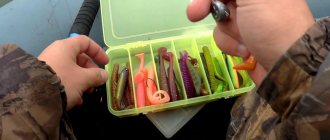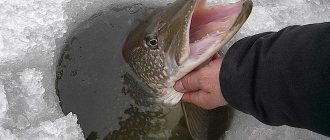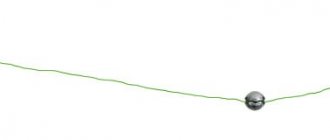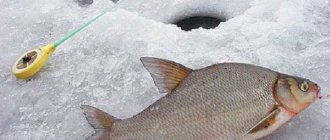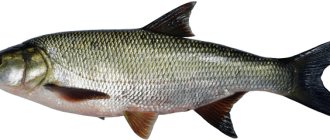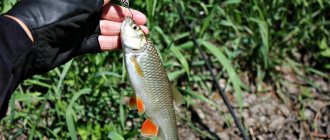Pike is one of the main objects of spinning fishing. This is because this predator is widespread. It can be found on large and small rivers, ponds and lakes. For most spinners, pike was their first trophy. And someone starts to get involved in spinning fishing just to catch a toothy predator.
How to assemble a spinning rod for pike fishing - form, reel, cord, equipment
How to choose a spinning rod for pike for beginners
The first thing you need to start assembling gear for a toothed predator is choosing a spinning rod. Its quality will determine what kind of game the bait can be set. Therefore, you need to familiarize yourself with the parameters of the rods and choose the appropriate option for yourself.
Some athletes and even amateurs prefer to use different forms for different baits, since they can reveal the game of baits differently. However, this option is more practical when fishing from a boat. In coastal fishing, when you have to walk a lot, carrying several sets of rods with you is not very practical. But you can try to choose a universal fishing rod for your fishing characteristics.
Spinning rod equipment for pike fishing schematically
The first thing you should pay attention to is the length of the rod. If fishing is planned on a small river, with heavily overgrown banks, then you can opt for a short rod, 2.1 meters long. If the branches do not interfere with casting, and the cast itself needs to be cast further, you can use longer spinning rods.
The rod test indicates what weight of bait is recommended to be used. If the bait is smaller than the stated test, then it will be extremely difficult to animate it, and it will also not be possible to cast a bait that is too light for the fishing rod. At the same time, if the bait is very heavy for a spinning rod, there is a risk of breaking it. For pike fishing, a medium class rod is most often suitable. Ultralight is used less often. Among ultralight spinning rods, Shimano Catana can be noted.
To set the correct bait action, you need to use a rod of a suitable action. So, to twitch wobblers you will need a spinning rod with a fast and super-fast action, such as the Favorite X1. Thanks to the rigidity of the stick, you can fully unleash the potential of these lures. For fishing with spinners and silicone, a medium action rod, such as the Favorite New Spirit, is suitable.
Build the form
A good spinning rod for pike for jig and twitch fishing:
Which reel to choose for spinning for pike
A spinning reel for pike fishing can be either spinning or multiplier. Meat grinders are more common among our fishermen.
For spinning fishing, the weight of the reel plays an important role. It should not be heavy, since the spinning rod is constantly in the hands.
Therefore, you should abandon heavy traction reels in favor of small and medium-sized spinning reels. A spool size of 2500-3000 will be sufficient, such as in Shimano Stradic. This is a universal size for dough forms 10-30, 5-21 grams.
The location of the front clutch is convenient, as it can be adjusted during fishing. The quality of the reel will determine the wiring, as well as how the cord will be laid on the spool. And this, in turn, will avoid the formation of beards.
Choosing braid for fishing
To catch pike with a spinning rod, use a line. It does not stretch and allows fish pokes to be clearly transmitted to the tip of the rod. Also, the cord does not dry out over time and does not have a memory effect like fishing line. Cords are marked by the weight they can support in pounds, expressed in lb. Select Basic PE 12 lb cord is good for pike.
What kind of leash is needed for pike fishing?
The last important element of the tackle is the leash. It is useless to hunt for pike without a leash, as it easily bites the fishing line and cord. The best pike leashes are steel, titanium and fluorocarbon.
Titanium leads assemble well on crimp tubes
The simplest option is a twisted string. This is the cheapest consumable. The disadvantage is that it becomes deformed over time. Other steel leaders, such as titanium ones, are also used for pike fishing. Also, the use of fluorocarbon leaders is quite common. But they need to be selected based on the expected catch size, since pike can still bite through fluorocarbon if the diameter is insufficient.
How to assemble a spinning rod for pike fishing so that the tackle is balanced and catchy, how to choose a rod, reel, cord and how to balance and equip it all:
Features of pike fishing
- In most cases, pike fishing is carried out in difficult conditions: thickets of dense underwater vegetation and snags; in addition, the pike that finds itself on the hook exhibits stubborn resistance, makes sharp throws from side to side, jumps out of the water, making candles, so gear for pike fishing must be as strong and durable as possible. Powerful rods, power reels, strong braided fishing lines, strong leashes and reliable hooks - all this is the arsenal of a real pike fisherman.
- The pike has the sharpest teeth, with which it can easily bite through the thickest fishing line. When fishing for pike, you must use leashes. To catch pike, different types of leashes are used: steel, guitar string, tungsten, titanium, Kevlar and fluorocarbon. The length of the leash is selected based on the fishing conditions and the bait used and is usually 15-20 cm. When catching large pikes, the length of the leash can be increased to 30 cm.
- Pike have a very hard mouth, so before fishing you should make sure that your hooks are sharp enough. You can sharpen the hooks with a needle file. In order to remove the hook from the mouth of a caught pike, you should use a special extractor or clamp and a gaper. It should be remembered that wounds from pike teeth are very painful and do not heal well.
- When fishing for pike in the summer, the angler must have a good landing net with him to remove the pike from the water. During winter fishing, the angler will need a special hook that will help remove the pike from the hole.
- Pike fishing can be done both from the shore and from a boat. Catching pike from a boat is mandatory when fishing with mugs and is advisable when fishing with a spinning rod in large bodies of water, where promising fishing spots can be located at a considerable distance from the shore. By boat, you can swim within casting distance to any interesting thickets, snags, or supports of hydraulic structures. Pike is extremely curious; the noise of the oars and the movement of the boat not only do not scare away the pike, but on the contrary, attract its attention and cause a subsequent attack on the bait. On a small river or lake there is no point in fishing from a boat. On such reservoirs, you can throw the tackle to the point the fisherman needs right from the shore.
- Large pike can live in a very small body of water. If there is a good food supply, pike grows to a very significant size and becomes the dominant predator, keeping the entire body of water at bay.
- When catching large pike, you should use large live bait and large artificial baits. A five-kilogram pike can easily attack a two-hundred-gram crucian live bait. When catching large pike with a spinning rod, you can safely use silicone baits 15-20 cm long and wobblers 110-130 mm long.
- When fishing for pike, you need to choose the right fishing spot. The pike needs a place where it can ambush. Areas of the reservoir with a flat bottom, without vegetation or snags are not suitable for pike; there is simply nowhere for it to make an ambush, so fishing in such a place is unlikely to be successful.
- When fishing for pike with a fishing rod using live bait, when installing summer and winter girders, as well as fishing with mugs, it is important to choose the right live bait. Crucian carp is considered the best live bait for catching pike. Minnows, roaches, loaches and small carp are good candidates for this role. All these fish are widespread in our reservoirs, are well known to pike, and are also distinguished by good vitality. Less tenacious as live bait are perch, rudd, silver bream and white bream, but in some reservoirs they can be more effective when fishing, since here they are the main food item for pike. The worst suited bait fish are bleak, redfish, ruffe, minnow and dace; all of them have very little tenacity, and as you know, pike do not take dead bait. It is better not to use them as live bait.
Set of lures for pike fishing
Lures are selected for specific fishing circumstances and the preferences of pike at a given time. Pike are caught using spoons, wobblers, silicone and surface baits.
The toothy predator has always responded well to hardware. Catching a pike with a spinner or a spinner using a uniform retrieve is not very difficult if it is active in principle. Mepps spinners of the Aglia long series with an oblong petal of the third number have proven themselves to be good for pike. Among the spinners, we can mention the Atom spinner.
Mepps Aglia Long
In autumn it is difficult to do without wobblers such as Rudra and Orbit. These minnows provoke hungry autumn pike to bite.
Zipbaits Orbit 110 sp - a typical autumn wobbler
In spring and autumn, you can rely on using a jig. To catch pike, use larger than average lures of 3.5 inches in length. Full-bodied vibrating tails are good, like barrels such as Select Shad One. The best colors in clear water are machine oil and ultraviolet light, in cloudy water - acidic colors.
Tandem - spinner + vibrating tail
In summer, when reservoirs are heavily overgrown with grass, it is advisable to use surface baits, poppers, as well as ducklings, mice, and toads. Pike actually feed on various living creatures that fall into the water. Therefore, they are familiar food for her.
Catching pike with surface lures is a separate art form. It's nice to watch the beautiful attacks and candles of this strong fish.
Pike fishing in winter
Pike can be caught all winter. One of the best periods
for catching pike, including large ones,
the time of first ice
. At this time, pike are very active and take both live bait and artificial baits. The best place for pike fishing at this time is not far from the shore, next to the coastal reeds. With the onset of deep winter, pike move away from the shore towards wintering pits. Pike stand on the dumps of wintering pits and hunt fish emerging from wintering pits. During a sudden change in weather, blizzards and strong winds, the pike becomes extremely passive and refuses to take the bait. In clear sunny weather, even in severe frost, pike can be active and catch well. During the period of last ice, the pike again becomes very active, its bite intensifies, as the pike begins to prepare for spawning, so it feeds heavily, trying to create an energy reserve.
In winter, pike is caught in a variety of ways: on a fishing rod with a vertical spoon or balancer, on winter baits, and some avid spinning anglers catch pike on a winter spinning rod.
Catching pike with a winter fishing rod using a spoon or balancer
The best time for catching pike with a vertical spoon and balancer is the time of the first and last ice. In the dead of winter, this fishing method cannot give good results due to the too low activity of the pike. To catch pike in winter, you should use a rod of appropriate power; pike can reach quite decent sizes and it will easily break a fishing rod if it does not have the necessary strength. As a bite alarm, you can equip your fishing rod with a nod.
When fishing for pike in winter, the angler drills a large number of holes at once and fishes them in turn, one after another. To search for pike sites in winter, it is useful to use an echo sounder, which allows you to detect anomalies on the bottom, near which the pike ambushes. The success of pike fishing in winter largely depends on the correct choice of fishing location.
When fishing with a vertical spoon, play the bait near the bottom, with an amplitude of about 30 cm. Then, if there is no attack from the pike, the game of the spoon is repeated at a greater distance from the bottom. When one hole is fished, move on to the next. Some fishermen further increase the attractiveness of the spoon by attaching a worm or piece of meat to its hook.
When catching pike with a balance beam, the same bait action is used, but in addition, they change the amplitude of the rod swings, tap the balance beam on the bottom, and pause while the balance beam hangs in the water column. Pike often attacks the balance beam while paused. Recently, rattlins, which are bladeless balancers, have become popular among pike anglers in winter. With the help of rattlins it is good to carry out initial reconnaissance of a reservoir; they are able to attract pike from a great distance.
When catching pike with a spoon or balancer, you need to consistently fish all depth horizons; pike can stand at very different depths, both at the very bottom and right under the ice. The more passive the pike, the softer and more delicate the bait should be played.
Zherlitsy
Zherlitsy is one of the most popular ways of catching pike in winter. You can fish with winter baits throughout the winter. This fishing method is effective not only on the first and last ice, but also during the deep winter period, when other fishing methods are ineffective.
Most fishermen use purchased winter fishing poles, which consist of a plastic platform, a stand with a reel attached to it, and a flexible rod with a flag, usually red or orange. A fishing line with a diameter of 0.4-0.55 mm and a length of 10-15 meters is wound onto a reel, a sliding olive weight is put on the fishing line, a leash and a tee or double hook are tied to the end of the fishing line, on which live bait is attached. It is not recommended to use braided fishing line or monofilament of a thinner diameter for girders; they will cut your hands. Such a girder is installed directly on the hole, simultaneously protecting it from freezing and exposure.
In winter, fishermen most often use crucian carp, gudgeon, roach and perch as live bait. The live bait is placed on a hook and a sliding sinker is installed so that the live bait is located at a distance of 10-15 cm from the bottom. The line on the reel is fixed with a flag. When a pike bites, the line unwinds, the flag is released and flies up, signaling the fisherman about the bite. The fisherman hurries to the triggered girder, makes a sharp hook and fishes out the caught pike.
When fishing for pike on rigs, the angler drills a large number of holes at the very beginning of fishing. Typically, the holes are located along the shore, in two rows, with a distance of up to 10 meters between the holes. If the pike does not want to be caught, a new row of holes is drilled further from the shore. When fishing for pike with winter lures, an ice drill with an electric or fuel engine, which allows you to quickly drill a large number of holes, and an echo sounder, which allows you to detect changes in depth at the bottom of the reservoir and the fish itself, can be of great help to the angler.
Finding a predator on a pond
Searching is an integral part of spinning fishing. Spinning fishing is largely exploratory. The spinner's task is to find where the pike can stand, and only then try to entice it to cast by playing the bait.
There are two tactics for spinning fishing. Firstly, stick to one place, changing the bait, its game and presentation. But for this you need to be sure that there are fish at this point. The second option is to look for active fish. Experienced spinning anglers already have their own proven places where it is known that pike are located. And even when fish are caught from this place, the holy place is not empty for long. A promising place is quickly occupied by a competitor.
Details about spinning fishing for pike and other predatory fish from the shore:
Fishing with a spinning rod from the shore for beginners: how to assemble, throw a form and successfully catch a predator
How to catch pike with a spinning rod - where to look and how to fish from the shore and boat on a lake, pond and river
This fish prefers to attack from an ambush. She has her own parking places. Knowing such places, you can methodically fish for them. Even without knowing such places on a particular body of water, you can pay attention to some features of the body of water that will tell you where the pike may be.
Secrets of catching large pike using a spinning rod:
Fishing tactics on the lake
Pike in closed reservoirs often migrate from one place to another. Promising places for toothfish on a lake may be small backwaters where the shoreline curves, there are windows in the grass, as well as the border of thickets and clear water.
It is often easier to fish with a spinning rod on a lake than on a river. To achieve success, you can change fishing locations. It is also worth methodically fishing each place using the fan method, including moving the bait along the coastline. Experiment with wiring and baits. On lakes, pike respond to smoother and slower retrieves than on rivers.
Tactics on the river
On the river, pike have many promising places to stay. These are pools and backwaters of the river, as well as snags in the water and the shadow of hanging tree crowns. Deep slumps, channel and bank edges, bends in the banks, places of reverse flow.
Small rivers allow you to fish the entire horizon directly from the shore. On large rivers it is advisable to use boats. On rivers you can use the entire arsenal of baits and experiment with wiring.
Search tactics on the reservoir from a boat
For fishing in the reservoir, an echo sounder may be required. This is because the fish in the reservoir are very “diluted with water” and finding them can be difficult. In addition, to fish in a reservoir, you need to find anomalies on the bottom or just deep places, which an echo sounder will also help with.
In reservoirs they fish with heavy baits, as well as by trolling from a boat.
Spinning pike fishing in autumn
Autumn is the most blessed time for any spinning player. At this time, the pike experiences the most protracted and continuous feeding, which begins approximately during the “Indian summer” period and lasts until freeze-up. Of course, there are also short-term declines in the activity of the predator, but then the bite resumes again.
At the beginning of autumn, you need to look for pike in the coastal zone. It is located along a strip of aquatic vegetation, stands on edges and deep drops, and takes refuge near single snags or local anomalies at the bottom. The predator lives here until the water has completely cooled and the peaceful fish that serve as its food roll back closer to the riverbed to their upcoming wintering grounds.
In the second half of autumn, the spotted beast occupies the following areas:
- deep pools and backwaters;
- wells and snags;
- channel slopes and slopes;
- reaches with uneven bottom relief and decent depths;
- extended ditches;
- deep riffles.
Here the predator finds food for itself, attacking schools of roach, silver bream and bream.
As the weather gets colder, the daily activity of pike shifts closer to lunchtime. Now she rarely feeds in the early morning or just before sunset. In the second half of autumn, the toothy predator becomes active around nine o'clock in the morning and feeds out until lunchtime. Then the bite gradually subsides.
Tackle and bait
In autumn, fishing for pike with a spinning rod in rivers involves, in most cases, the use of jig gear. Of the baits, the best results are shown by edible silicone products of various shapes and sizes. Front-loaded spinners work well.
In areas with a clean bottom, it is advisable to try fishing with heavy oscillating spoons, which were effective many years ago and remain relevant to this day when hunting for pike, especially large fairway ones.
Advice! The jig kit must provide the necessary sensitivity, range and power.
When fishing for toadfish, anglers use shallow-diving wobblers and wide-bodied spoons. It is precisely these baits that allow you to most productively fish shallow areas with bottom aquatic vegetation, guiding them in the upper horizon.
Photo 3. Silicone fish with an attractant.
In these conditions, the sensitivity of the tackle is not the main criterion, but its power and the ability to carry out forced fishing, preventing the pike from going into the thickets or nearby snags, come to the fore.
How to catch pike with a spinning rod from the shore - fishing tactics and strategy
Coastal pike fishing somewhat limits the spinning angler's choice of places. Some places you just can't get to. However, if it is a small lake, a river backwater or a small river, shore fishing can bring good results.
Often for shore fishing you will need a longer rod to make longer casts. Shore fishing involves fishing at shallow depths.
Fishing for pike with a spinning rod - watch the video on how to find a predator, what baits to use, how to retrieve, how to tire out a pike when fishing after a bite:
Choosing bait depending on conditions
Often fishing conditions dictate what bait to use. For example, when fishing in heavily overgrown places, it will not be possible to use wobblers with many tees. In such places it is good to use surface baits, as well as offset silicone. Silicone baits will also allow you to fish in heavily snagged areas.
Correct placement of the bait on the offset machine
Twitching
This type of animation is used for fishing with wobblers. Twitch using rods with fast and super-fast action. Soft rods will not be able to give the wobbler the desired action.
Twitch is called torn wiring with jerks. At the same time, the wobbler jerks in different directions and freezes for a moment, which provokes the predator to attack.
Wobblers are used at depths of up to 2-4 meters. There are also diver wobblers, the use of which is relevant up to 5-8 meters.
Jig fishing
Jig fishing is used with silicone baits. With the help of jig wiring you can push through the entire horizon of water.
Classic jigging is: tossing the bait from the bottom, then a pause, during which the bait smoothly sinks to the bottom, and then jerking and reeling again.
Video of catching pike with a spinning rod in 2021 - fishing with jigs, rattlins, fishing tactics, technique and fishing:
Spinner fishing
It is best to start mastering spinning fishing with spinners. This is because uniform wiring is perfect for fishing with spoons. Spoons have their own game, which can be set even with even wiring.
Oscillating spoons can also be used in stepped retrieves, allowing the bait to sink to the bottom.
How to throw a spinning rod when fishing for pike over your head:
Power casting spinning rod:
Fishing for pike with a spoon
When fishing for pike on a lake, the current does not interfere with the play of rotating and oscillating spoons. Therefore, most baits work well in stagnant bodies of water. less in lakes and the retrieve should be slower than in river fishing.
If there are three main types of animation of spinners that will allow you to achieve success when fishing in the lake.
- Uniform wiring. To perform it in the lower water horizon, after casting, you need to let the bait fall to the ground, and then begin to evenly rotate the reel handle. The best results come from fishing when the lure periodically touches the bottom, causing it to lose play for a short time. Such interruptions in work often provoke a pike bite. You can also place the bait in the middle or upper layer, in which case reeling should begin before it falls to the bottom. Uniform wiring is used when fishing with both spoons and spinners.
- Stepped wiring . Performed in the lower water horizon. After the bait sinks to the bottom, you need to start reeling in the fishing line and periodically take short breaks, allowing the equipment to fall to the bottom. With this wiring, the spinner is as close as possible to a fish weakened by disease, which will become an easy prey for the pike living in the lake. This type of animation is used when fishing with front-loading spoons and spinners.
- Wavy wiring brings good results when fishing for pike on lakes using turntables. To perform it, you need to evenly rotate the reel handle, while smoothly shaking the tip of the rod. The bait will move along a wave-like trajectory. This animation should be used in cases where the pike does not respond to the uniform movement of the bait.
Fishing for pike in the spring with a spinning rod
In spring, it makes sense to look for pike in different places. At the beginning of spring, the toothed predator is still inactive and inactive. However, the so-called winter spinning has become widespread. Pike is caught in small rivers or in ice-free water bodies. Although the fish is inactive, you can still find the key to it.
In early spring, fishing is not much different from winter spinning. The fish is in deep places; you need to look for it in holes, for example using a jig. As soon as the water warms up to 5-8 degrees, the pike begins its pre-spawning feast.
The predator begins to visit for future use before spawning. At this time, she actively feeds and begins to come closer to the shore for schools of fry. It has been noticed that in the spring small or elongated baits work better.
Experienced fishermen attribute this to the fact that the predator’s belly is filled with caviar, and it will be difficult for it to swallow a large fish. The pre-spawning feeding period does not last long, only a couple of weeks.
In spring, pike bite aggressively in the westerly wind, especially good if there is a light drizzle on the water
Then the pike begins to spawn when it stops taking bait. After spawning, the fish gets sick for some time; as people say, it “changes its teeth.” As soon as the pike recovers from spawning, it begins to actively bite again. Usually this time falls in the month of May. The fish begins to occupy their usual summer camp sites. Smaller pike remain in shallow water, in the grass and in the reeds.
In spring, you can often catch a pike hatch just in the middle of the day.
Mistakes when fishing for pike with a spinning rod - how to catch it correctly, what gear to use:
Pike fishing spots
Pike has outstanding adaptability to its habitat conditions. Pike can live and reproduce successfully in both standing and flowing water bodies. Pike are not afraid of fluctuations in water levels, decreases in water oxygen saturation, or fluctuations in water temperature. If there is a food supply, it is able to adapt to any living conditions. Pike can inhabit both clean and overgrown areas of water bodies.
The most promising places for pike fishing
:
- Boundary of vegetation (sedge, reeds) with free water
. Pike can perfectly camouflage themselves among underwater vegetation, and often use such places for ambush. - Windows of clear water surrounded by vegetation
. Fishing for pike in such a place often provides a good catch. - Bottom irregularities, depth changes, edges
. Pike attacks prey located or swimming in a higher horizon. - Bridge supports, pillars, and piles
on rivers often provide cover behind which pikes hide. In such places, the water flow is divided in two and a reverse flow often forms. The pike stands behind cover, hiding from the current, which itself carries small fish right under its nose. - Trees growing on the shore
, close to the water, often have bare roots, washed away by the current, behind which the pike stands as a shelter. The crown of such trees creates a shadow on the water; on a hot sunny day, small fish will hide in such a place from the scorching rays of the sun and can easily become prey for pike waiting for them here. - Snags, branches and tree trunks in water
are often used by pikes to set up an ambush. - Shallow water riffles are full
of flocks of fry basking in the rays of the sun; pike visit the riffles to hunt them. The pike hides at the bottom behind the riffle and attacks small fish from below. - The steep banks of the river have been washed away
, next to which there is a strong current that washes out depressions in them. In these recesses the pike ambushes. - The border between fast current and calm water
in a river is often a stopover for pike. It is convenient for predators to guard small fish in such a place, tired of fighting the current. - Reed thickets
are the main place for pike fishing in winter on the first ice. - Wintering pit dumps
are the best place for pike fishing in the dead of winter. Pike hunt in such places for fish emerging from wintering pits. In addition, in such places the water is more saturated with oxygen than the water in shallow areas, full of rotting remains of underwater vegetation. - The edge of the ice along the coastal thawed areas
is a good place for fishing for pike on the last ice. Ice-free, warm and oxygenated water attracts small fish. The pike stands in a shelter under the edge of the ice and grabs unwary prey.
Fishing in summer
In summer, pike activity decreases somewhat. They catch pike in the summer using a variety of baits in a variety of places. Pike is an ambush predator. Therefore, she prefers to stay near natural shelters, in flooded trees, in grass and reed walls.
Due to the fact that in summer the reservoirs are actively overgrown with grass, spinning fishing in some of them becomes problematic. Therefore, summer is the time to use surface baits such as poppers, Croatian eggs, ducks, toads, and small-depth spoons.
In the summer, the hours for catching predators may change. Pike do not like the hot sun. Therefore, the time of its activity shifts to early morning or evening. Pike activity in summer can be observed during temporary cooling after rains and on cloudy days. Starting in August, when the water temperature begins to drop, pike become more active.
How to catch a pike with a spinning rod, in the video there is real pike fishing - gear, bait, wiring:
Lures for pike in summer
Here, as mentioned above, complete confusion and anarchy reigns. In summer, everyone chooses the bait for pike that they want. In the summer months, the predator bites on virtually the entire arsenal of baits produced by the fishing industry; we will list only a few of them:
- Rotating spoons of all sizes.
- Oscillating spoons of various shapes.
- Wobblers for casting from the shore and from a boat.
- Surface baits – poppers, walkers, sliders.
- Non-snagging lures for catching pike in the grass - spoons, sliders, slugs, spinnerbaits.
- Deep wobblers for trolling pike.
- Shallow-water wobblers for catching pike by casting in shallow water and on overgrown reservoirs.
- Jig baits for fishing with jig weights and jig heads in deep places.
- Silicone baits for fishing without weights with hooks in a non-snagging version in the most overgrown places.
And the predator gratefully responds to all this splendor with bites, which then develop into fishing. Fishing for pike in the summer with a spinning rod, however, also sets some of its limitations.
The most typical set of spinners for catching pike in the summer using a spinning rod.
Such restrictions include test parameters of gear that are usually used for pike fishing during this season.
Fishing in autumn
Autumn is a classic time for catching trophy specimens. Catching pike at this time is not difficult. The predator increases its activity during this period and begins to gain fat before winter.
The peak of the autumn bite occurs in mid-October - early November. In autumn, the toothy predator does not disdain large baits. This is the time to experiment with larger crankbaits and silicone.
In autumn, the grass begins to fall on reservoirs, which allows you to catch predators in a larger water horizon.
Trolling for pike
For large pike, you should first go to large and deep lakes and reservoirs. Here the predators have an abundance of food and the most well-fed of them follow schools of forage fish like shepherds, or rather, like wolves relentlessly following a flock of sheep. At the same time, the seasoned ones devour their own kind. In any case, when fishing in Karelia on some lakes, my friends and I repeatedly removed 6-15 kg of pike from the stomachs of their fellow tribesmen weighing from 1.5 to 3 kg. In addition, we found traces of fish teeth on the bodies of two caught pike weighing 7 and 8 kg. You can imagine how big the monster that bit them was. It is not clear what makes predators feed on their own kind. Most likely, this is an attack on competitors.
Trolling for pike is ineffective without the use of GPS and echo sounder. If you come to the reservoir for the first time, then first you should take the time to study it well. This greatly increases the chances.
You should always take note of the unusual bottom topography, which especially stands out against the general background, as well as snags and single stones, behind which the predator often ambushes. Among lakes of glacial origin there are those that have a flat sandy bottom. It is important here to find even minor holes and mark their coordinates using GPS. Then connect the points with lines. This will be the route of movement when fishing - from one hole to another. There is no need to strive to buy a very expensive echo sounder. Above a flat bottom, more often than in other places, one encounters “monsters grazing herds in the middle of the water.”
Usually on the medium lakes of the Tver region and in Karelia I catch pike by trolling at a depth of 5–8 m. The fishing speed is 2.5–3 km per hour. Some people walk faster. But from time to time I make small accelerations, then again I switch to a constant speed limit. Often the bite occurs when the speed changes.
In the reservoirs of the northern regions, you can catch trophy pike at shallower depths, for example, 3–4 m, moving along the shore or at a short distance from it. Here there are lakes with rocky shores, and pike sometimes stand under them. There are such lakes in Finland. But due to the great competition for food, large pike are caught quite rarely in this country: even on huge wobblers, pike from 800 g to 2.5 kg are often caught. Finns look for trophy pike exclusively at great depths.
Most often, when searching for “monsters,” pop-up wobblers with a length of 15 to 25 cm with an elongated blade are used. The amount of their depth greatly depends on the speed of the boat and the distance of the bait from it. So, when released at 30 m and at a slightly increased speed, the wobbler goes as deep as possible. If it becomes necessary to place the bait at some distance from the bottom or in half-water, make a longer release (50–70 m), and reduce the speed of movement. Loosening the line tension allows the wobbler to rise above the ground.
As was said, pike often hide in ambush near a separate stone or snag. Such points should always be fished, but then it becomes necessary to let the bait rise in order to pass the obstacle, since the tackle may become tangled during maneuver to the side. This is also done by releasing the fishing line and reducing the speed of the retrieve. At this moment a bite often follows.
For large pike at depth, both wobblers with natural colors and poisonous ones (orange-yellow, etc.) work well. However, in reservoirs with clear, brightly colored water, wobblers are best used in cloudy weather or when fishing at dusk. In sunny weather, use wobblers with natural colors. It was on a large Rapala wobbler with a natural coloring that the 11.5 kg pike you see in the photo was caught. This happened on one of the lakes in the Tver region.
Tackle
When trolling for pike, at least two rods are used. It is believed that it is safer to take a “stick” of increased dough here. When installing 3-4 spinning rods on a boat, you have to use so-called boats that spread the gear to the sides. However, with boats there is a problem that you cannot use deep wobblers in their pure form - they turn the boats over when retrieving. To prevent this from happening, you have to take wobblers with a small blade and put a sinker on the fishing line to sink them.
As for the reels, they use inertia-free ones with a good stroke. The best ones are those that have a 60 mm spool and hold 200 m of braided fishing line with a diameter of 0.2 mm. The handle of the reel should be powerful. Multis are also convenient and very reliable for trolling fishing.
A few words about important details. When trolling for trophy pike, leashes should be soft and long - from 30 cm to 50 cm, made of metal braided fibers - then the bait plays better. All connecting elements must be made of good material. Under no circumstances should you take those that are produced under the brands of unknown companies, because there is a risk of missing out on the trophy.
A. Goryainov
Source
